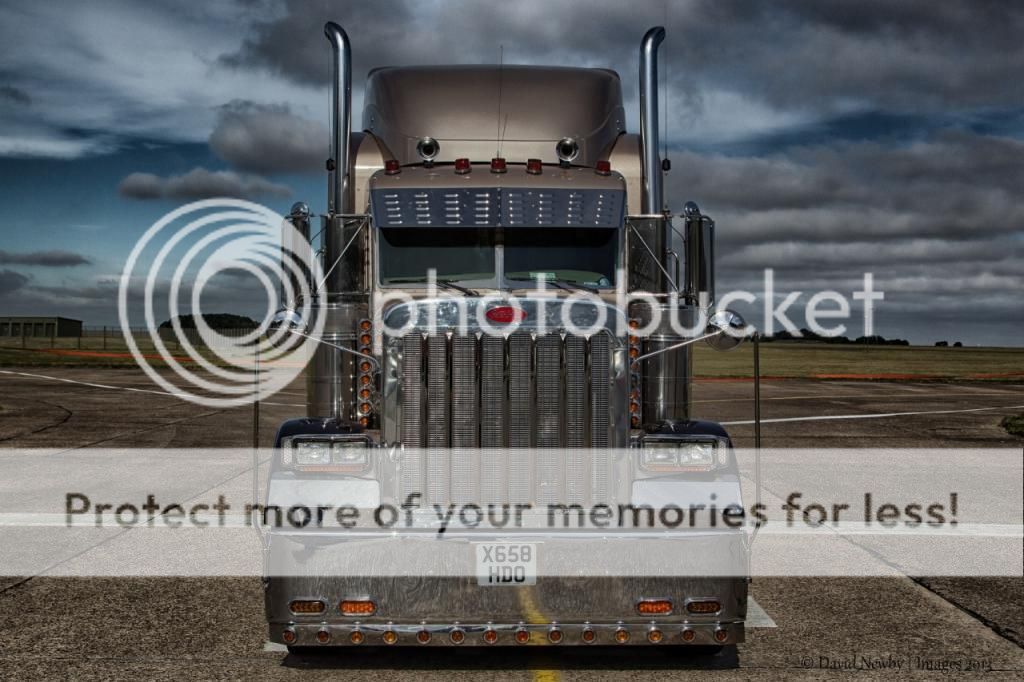Mountain Driving
Topic 4846 | Page 1
Hey Jimbo, don't sweat it man. Sure, you may not see a mountain while you are in school, but remember this: they don't really produce truck drivers from these truck driver schools. What they do is help people get a CDL , and then most of them will help you find a job. That is there purpose, and the trucking company that hires you knows that all too well. When you get hired they are going to put you with a trainer for usually a minimum of four weeks. I criss-crossed the country twice while I was with my trainer, and I'm quite confident you will encounter some mountains. The problem with most people that come in here for help is that they have already poisoned themselves with bad on-line information and frightening you-tube videos before we've even had a chance to talk some sense into them. But, heck, we are accustomed to it, and we just carry on everyday trying to do our thing and pull people back from the brink of disaster before they get themselves off on the wrong foot in a career that doesn't allow for too many mistakes. When you go to work for a company they most likely will not put you in a truck as a solo driver until they think you are ready. Now you may not think you are ready, but as long as they think you are then they will turn you loose. And just so you know you will be learning and honing your skills for several years as a solo driver. You won't get to the point where you are ready for what ever comes your way and then they let you start driving, no, this career is a constant learning curve, and that is part of what makes it keep my interest.
Best of luck to ya, and just keep a level head and listen up in school, you are gonna be just fine when you start facing those mountains.
CDL:
Commercial Driver's License (CDL)
A CDL is required to drive any of the following vehicles:
- Any combination of vehicles with a gross combined weight rating (GCWR) of 26,001 or more pounds, providing the gross vehicle weight rating (GVWR) of the vehicle being towed is in excess of 10,000 pounds.
- Any single vehicle with a GVWR of 26,001 or more pounds, or any such vehicle towing another not in excess of 10,000 pounds.
- Any vehicle, regardless of size, designed to transport 16 or more persons, including the driver.
- Any vehicle required by federal regulations to be placarded while transporting hazardous materials.
TWIC:
Transportation Worker Identification Credential
Truck drivers who regularly pick up from or deliver to the shipping ports will often be required to carry a TWIC card.
Your TWIC is a tamper-resistant biometric card which acts as both your identification in secure areas, as well as an indicator of you having passed the necessary security clearance. TWIC cards are valid for five years. The issuance of TWIC cards is overseen by the Transportation Security Administration and the Department of Homeland Security.
HOS:
Hours Of Service
HOS refers to the logbook hours of service regulations.OOS:
When a violation by either a driver or company is confirmed, an out-of-service order removes either the driver or the vehicle from the roadway until the violation is corrected.

If you are in the right gear, you will not need to use the brakes at all to go downhill with the exception of the engine brake. This is during good weather.
If the road is wet and slippery, you don't use the jake brake to slow down or speed up. In this case snubbing is the best way to go down without overusing the brakes. You find the safe speed and then you then be in a speed 5 mph slower than the safe speed.
Snub Braking A Tractor Trailer Down A Mountain
OWI:
Operating While Intoxicated

Hey Jimbo, don't sweat it man. Sure, you may not see a mountain while you are in school, but remember this: they don't really produce truck drivers from these truck driver schools. What they do is help people get a CDL , and then most of them will help you find a job. That is there purpose, and the trucking company that hires you knows that all too well. When you get hired they are going to put you with a trainer for usually a minimum of four weeks. I criss-crossed the country twice while I was with my trainer, and I'm quite confident you will encounter some mountains. The problem with most people that come in here for help is that they have already poisoned themselves with bad on-line information and frightening you-tube videos before we've even had a chance to talk some sense into them. But, heck, we are accustomed to it, and we just carry on everyday trying to do our thing and pull people back from the brink of disaster before they get themselves off on the wrong foot in a career that doesn't allow for too many mistakes. When you go to work for a company they most likely will not put you in a truck as a solo driver until they think you are ready. Now you may not think you are ready, but as long as they think you are then they will turn you loose. And just so you know you will be learning and honing your skills for several years as a solo driver. You won't get to the point where you are ready for what ever comes your way and then they let you start driving, no, this career is a constant learning curve, and that is part of what makes it keep my interest.
Best of luck to ya, and just keep a level head and listen up in school, you are gonna be just fine when you start facing those mountains.
Old School...thanks for the words of wisdom. Pretty much what I assumed but never hurts to ask right? Drake...great advice...thanks for the feedback. Be safe out there...
CDL:
Commercial Driver's License (CDL)
A CDL is required to drive any of the following vehicles:
- Any combination of vehicles with a gross combined weight rating (GCWR) of 26,001 or more pounds, providing the gross vehicle weight rating (GVWR) of the vehicle being towed is in excess of 10,000 pounds.
- Any single vehicle with a GVWR of 26,001 or more pounds, or any such vehicle towing another not in excess of 10,000 pounds.
- Any vehicle, regardless of size, designed to transport 16 or more persons, including the driver.
- Any vehicle required by federal regulations to be placarded while transporting hazardous materials.
TWIC:
Transportation Worker Identification Credential
Truck drivers who regularly pick up from or deliver to the shipping ports will often be required to carry a TWIC card.
Your TWIC is a tamper-resistant biometric card which acts as both your identification in secure areas, as well as an indicator of you having passed the necessary security clearance. TWIC cards are valid for five years. The issuance of TWIC cards is overseen by the Transportation Security Administration and the Department of Homeland Security.
HOS:
Hours Of Service
HOS refers to the logbook hours of service regulations.OOS:
When a violation by either a driver or company is confirmed, an out-of-service order removes either the driver or the vehicle from the roadway until the violation is corrected.
New Reply:
New! Check out our help videos for a better understanding of our forum features

















Preview:








 TT On Facebook
TT On Facebook
I live near Buffalo,NY and, well, everything around here and everything around where the school I'll be attending is flat as a pancake. There are some hills to the south of here but I'll be getting trained on flat ground. One of the biggest concerns I have about driving is driving in areas with steep grades. Most of you have probably seen the infamous "Donner Pass" video and man...that is one scary scene.
So given the fact that my training will be on flat ground....how the heck will I learn how to navigate mountain ranges?? I've watched videos, read articles, etc, etc about not downshifting on a down hill, picking the right gear based on the load, jake brakes, and all the rest. Its still the one overwhelming thing that pops into my thoughts.....more so than backing! I've always been curious how the hell you'd actually stop a rig on a downgrade....if you even can. What if you're on a downgrade and you have no choice but to stop...traffic jam ahead, something in the road.
Your experience is appreciated! Thanks